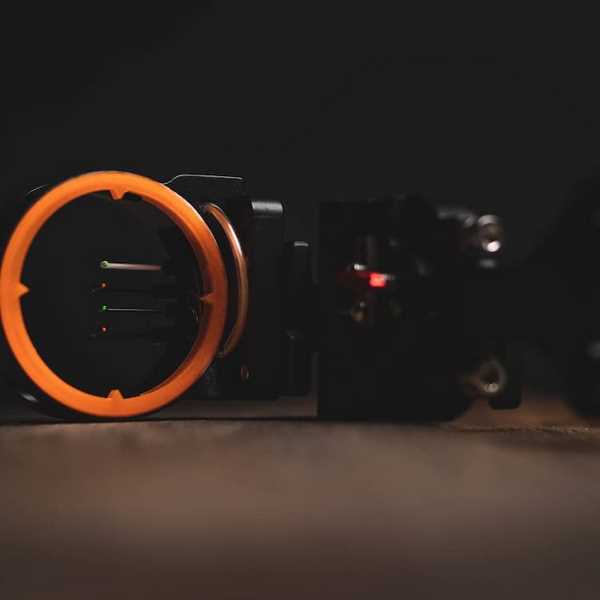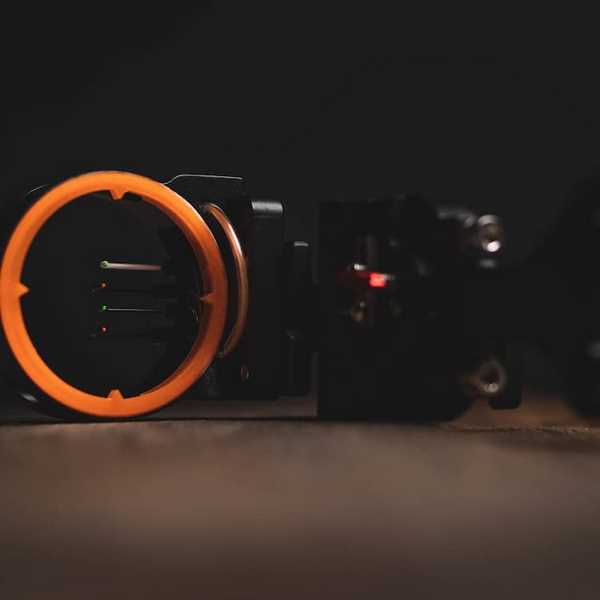
When setting up a multi-pin sight, you’ll need to consider a few factors to determine the best yardage strategy.
Overall setup: Depending on your draw weight, draw length, and overall bow speed, your arrows could drop faster, even at closer distances. If you’re shooting a lower-poundage or relatively slower bow, you won’t want to rely on pin-gapping as much.
Where and what you’re hunting: If you’re bowhunting in whitetail woods where shots won’t exceed 20 yards, you won’t need the same sight setup as archers stalking pronghorns in wide-open plains.
Maximum effective range: Although a lot of “celebrity hunters” will brag about 100-yard shots, outrageous shot distances shouldn’t be your goal. Determine the longest distance you can comfortably and accurately make an ethical shot on a live animal at — your bottom pin won’t need to be set far beyond that number.
A lot of factors can come into play, but generally, most hunters stick with a 20-yard top pin. Because most archers won’t see much change in trajectory from 10 to 20 yards, this works well for the majority of compounds.
From there, the remaining pins can be set at 10-yard increments. So for a five-pin sight, you’d have 20-, 30-, 40-, 50-, and 60-pound pins. But there are three-pin and seven-pin models as well.
Especially if you have a seven-pin sight, there’s nothing wrong with having a longer-range pins for target practice and tournament shooting (in fact, practicing beyond your maximum hunting range is incredibly beneficial) — as long as you won’t be tempted to take an irresponsible shot when a monster hangs up a football field away.
Some bowhunters simply choose a single-pin sight for more flexibility and precision without pin-gapping. It just depends on your personal preference.
No matter your yardages, if you increase your draw weight or make any other notable changes to hunting setup, you’ll want to revisit your sight pin setup and likely need to make some adjustments.

The Bow Bully,
I wish I had read this before I missed a 30-yard shot by using a 20-yard pin…
…but that was years before you started writing. LOL! 😉
Keep up the good work,
dave
Ha, I think most of us have horror stories like this!
Dave,
Been there, done that and immediately ditched the “extra pins”.
Hank
TBB,
When I was still shooting compounds I settled for a two pin configuration.
The sight pin was set for 20 yards and the second “range-finder pin” was set such that it would “bracket” the chest of a typical deer at 20 yards. I would then check the distance that the range-finder pin hit at so I would have two points of reference.
Think that even with the sight pins I was shooting more instinctively than not. I used the sight to confirm my stance/hold but focused totally on the target for the shot.
I’m teaching a guy to shoot a compound bow at the moment and only allow him to have a 20 yard pin. Started him at 10 feet, increasing the distance in small increments as he masters the range. After 2 month’s he’s doing well and can consistently put three arrows in a 3-4 inch group, on target, at anywhere from 10 to 20 yards.
The target I use (at this stage of training) is a 2″ eathafoam disk suspended on a string infront of the target butt. Find that the small, moving disk really helps the shooter focus on the target where a large flat target face invites the “close enough” mental attitude. …The classic “aim small, miss small” approach 😉
Think (in the spirit of KISS) that people should stick to one or two sight pins to start and “earn” more pins as the skill and need arises. IMHO, in most whitetail hunting situations too many pins is likely more a liability than a benefit.
Cheers,
Hank
That’s an interesting approach, Hank! I’m glad it works well for you!